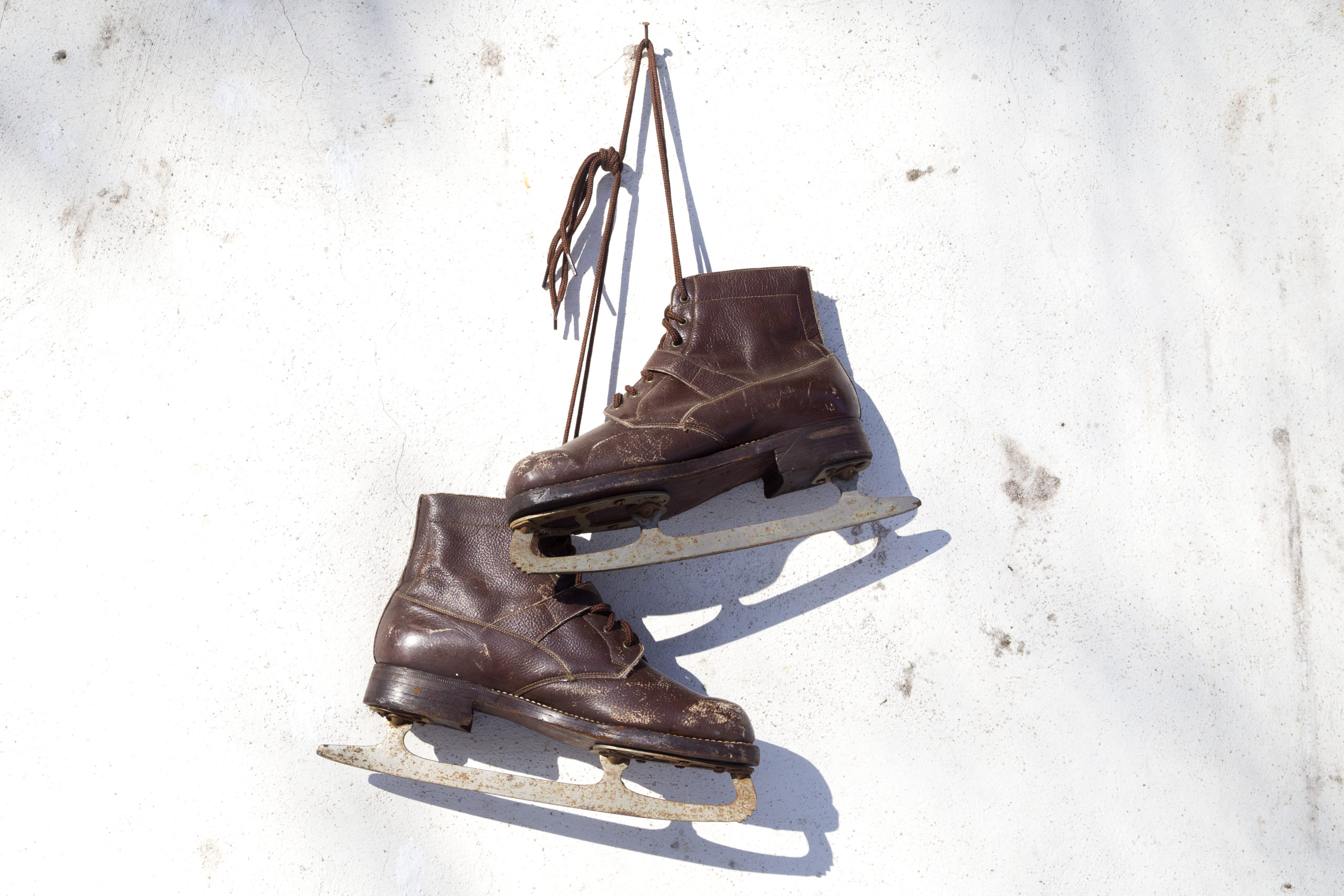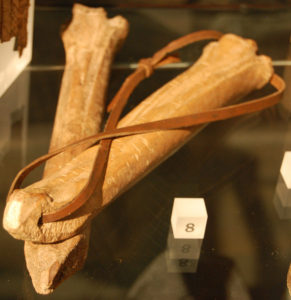When Were Ice Skates Invented & Who Invented Them?


The first known form of ice skates date back to 1800 BCE. Rather than metal blades and snug boots, Scandinavians made these from horse and cow bones that were pierced with holes and fitted with leather straps. Of course, these skates weren’t likely used for sport as skates are now. Many historians believe the operators of these bone-built ice skates used them as a means of traveling along frozen rivers and canals.
3,000 Years Later – From Bone to Iron

Experts identify that sometime after 1,200 A.D., ice skates took on a form a little more familiar. While still using leather straps as a means of fastening the boots to the blade, the blades themselves were no longer made of bone. Rather, early versions of this model are made from wood over a strip of iron. Over the course of the next hundred years, this model had fully replaced the bone blade approach.

As time moved on, so did the engineering of the ice skate. The next change in form came with a curl at the end of the toe. You may recognize this model from 16th and 17th century paintings. While this didn’t provide much for function, it brought a sense of style and form to the activity, perhaps indicating that the act of skating had now evolved into a casual activity.
Then, less than a hundred years later, the father of figure skating adopted techniques that had never been seen before on the ice, made possible by a new skate design that used blades attached directly to his boots. His name was Jackson Haines. And while his life was short-lived (he died when he was 36), his impact on the sport is legendary.
Enter the Sport of Figure Skating

Then came technique! We’d be remiss if we didn’t work in some figure skating history, here. In the late 18th century, a man named Robert Jones published what ice skating savants recognize as the original figure skating account.
Haines’s tight, well-executed performances came from his experiences as a ballet dancer. His “ice dancing” awarded him worldwide acclaim. He even won the U.S. men’s figure skating championship. But he left America to travel to Europe, where his talents were celebrated across several countries.
Since Then…
Thanks to the rise in figure skating popularity due to the efforts of figure skaters like Haines, ice skates have since been shaped to best complement the demands of the sport. Blades (now made of more advanced metal alloys rather than iron) became thinner and longer, supporting skater weight distribution.
From straps on a bone blade to tempered steel and chrome under high-quality leather, ice skates have come a long way over the years. Today, modern ice skates enable families to create memorable experiences, they give hobbyists a relaxing means of enjoying nature, and they bring the thrill of performance to some of the world’s grandest stages.
Ice Skates Built for a Unique Purpose
We see the variation in ice skate utilization in the very makeup of casual and competitor ice skates. That is, some boots and blades are manufactured for increases in speed and others to assist with comfort.
We at Riedell, for example, produce Eclipse ice skating blades for a range of functions and skating levels. Our high-end Eclipse Titanium blades are built to provide skaters with a lightweight feel for faster skating and easier jumping – a great choice for advanced competitive skaters. And there are also Eclipse models like the Volant blade, which is made of stainless steel and provides the beginner competitive skater with nimble movement and easy engagement with the ice.
Riedell Ice Skates – Over 75 Years of Crafting Excellence
Riedell Ice has had the pleasure of handcrafting quality ice skates for every level of skater since we first began in 1945. Our boots and blades can be found throughout North America and Europe. We take pride in our place in the history of ice skates.
Learn more about us by visiting our history. Interested in finding some Riedell ice skates near you? Use our dealer locator to see what’s around.
